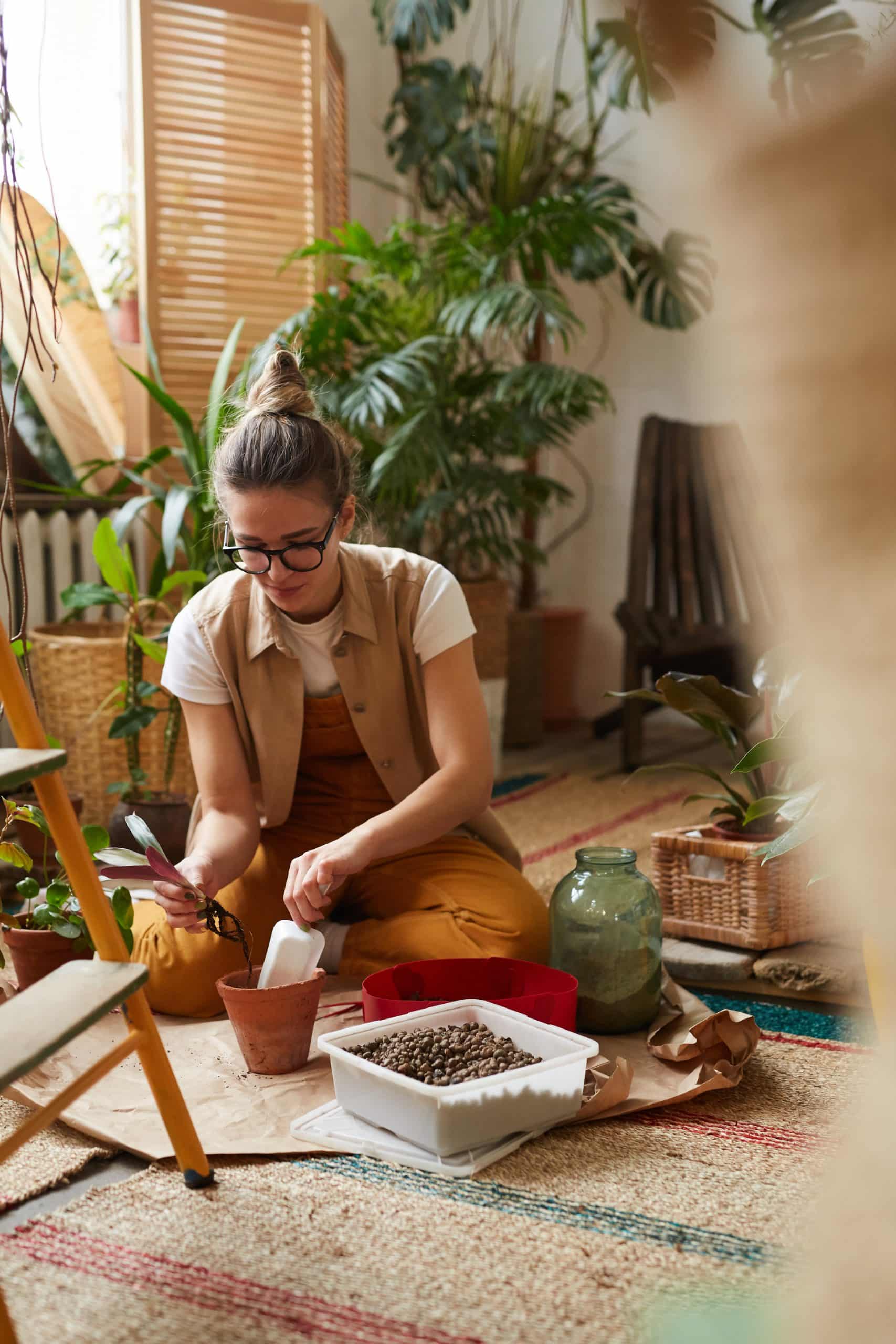Are you finding it difficult to add life to your north-facing porch, patio or outdoor space? You’re not alone. Turning these spaces into a blooming garden often poses a tricky problem for many homeowners due to the shade and cooler temperatures that these zones typically receive. Yet, having a verdant spot brimming with color and vitality doesn’t have to be a dream. The solution lies in choosing the right type of plants that thrive in such conditions.
To help you navigate this, we will offer insights on the best plants for your north-facing garden, tips on how to grow them, and the best places to shop for these green gems.
En parallèle : What’s the Best Approach to Integrating a Dishwasher into a Country-Style Kitchen?
Best Plants for a North-Facing Garden
North-facing gardens typically don’t receive as much sun as their south-facing counterparts. This lack of direct sunlight is the main factor to consider when choosing plants for these areas. But, rest assured, several plants are well-adapted to such conditions and can add much-needed color and life to your space.
Hostas
If you’re looking for a plant that can add lushness to your garden despite the lack of sun, Hostas are an excellent choice. With their broad, heart-shaped leaves available in various shades of green, they are perfect for adding a verdant touch to your north-facing garden. They are, without a doubt, a staple choice for shaded gardens.
Dans le meme genre : How Can You Create a Warm Industrial Living Space in a New Build Home?
Bleeding Hearts
Bleeding Hearts are known for their unique heart-shaped flowers. This plant thrives well in cooler, shaded areas and produces beautiful red, pink, or white flowers during spring. Its delicate and dramatic appearance makes it a favorite among garden enthusiasts.
Primulas
Primulas are another great choice for your north-facing garden. They are known for their vibrant colors, which can range from yellow and pink to blue and white. A truly eye-catching plant, Primulas can bloom even in the coldest areas.
Growing and Caring for Your Plants
Once you’ve chosen the plants that will best suit your north-facing garden, it’s time to understand how to grow and care for them. This section focuses on the optimum conditions required for each plant, aiming to arm you with practical knowledge for your gardening journey.
Soil and Watering
The first step in ensuring that your plants grow well is to provide them with fertile soil. Hostas, Bleeding Hearts, and Primulas all prefer well-draining soil. This means choosing a soil mix that allows water to pass through rather than pooling on the surface.
Watering needs for each plant vary. Hostas and Bleeding Hearts prefer evenly moist soil, but not overly drenched. On the other hand, Primulas need more frequent watering, especially during their growing period.
Light and Temperature
Another important factor to consider is the amount of light your plants receive. While all three plants mentioned here can tolerate shade, they also appreciate some morning or late afternoon sun. However, avoid harsh afternoon sunlight as it can scorch the leaves of Bleeding Hearts and Hostas.
Temperature-wise, these plants are quite adaptable. They can withstand colder temperatures, making them a perfect fit for a north-facing garden.
Shopping for Your Plants
Now that you know what plants will grow best in your north-facing garden and how to care for them, it’s time to go shopping. Numerous online and physical stores offer a wide variety of shade-tolerant plants.
When shopping online, ensure that the shop provides detailed images and descriptions of their plants. Customer reviews can also be a good source of information on the health and quality of the plants. Alternatively, you can visit a local nursery or garden center. The experts there can provide personalized advice and ensure you select the best plants for your specific conditions.
Incorporating Color and Aesthetics
Finally, while growing plants is about providing them with the right conditions to thrive, it’s also about creating a visually pleasing outdoor space. Consider the color of the flowers and foliage of your chosen plants and how they will complement each other. Hostas, for example, offer a wide range of shades of green, while Bleeding Hearts and Primulas add an array of vibrant colors to the mix.
Incorporate different heights and textures by choosing plants of varying sizes and leaf structures. This adds visual interest and depth to your garden. Remember, your garden is an outdoor extension of your home; make it a space where you can relax and enjoy the beauty of nature.
Through careful selection and proper care, your north-facing garden can become an oasis of calm and color. Turn your shaded space into a vibrant garden that you’ll be proud to show off. With the right low-maintenance plants, your north-facing patio can indeed be transformed into a garden paradise.
USDA Growing Zones and Plant Care for North-Facing Gardens
The United States Department of Agriculture (USDA) has developed a system of growing zones to help gardeners understand which plants will thrive in their region. In the context of north-facing gardens, these zones are a crucial factor to consider, specifically for those who live in colder climates.
USDA Growing Zones
The USDA’s Plant Hardiness Zone Map divides North America into 11 separate zones; each zone is 10°F warmer (or colder) in an average winter than the adjacent zone. When you pick up a new plant, you’ll notice a label that indicates the suitable USDA growing zones for that plant.
Hostas, bleeding hearts, and primulas are all relatively hardy plants that can survive in a range of USDA zones. Hostas, for instance, can thrive between zones 3 and 8, while bleeding hearts do best in zones 3 to 9. Primulas are a bit more versatile and can grow in zones 2 to 9.
Plant Care
Each plant has its own specific care requirements. For instance, while hostas prefer evenly moist soil, they don’t require as much watering as primulas, which need more frequent watering, especially during their growth period.
Bleeding hearts prefer to avoid the harsh afternoon sun, which can scorch the leaves. However, they appreciate some morning or late afternoon sun exposure.
When it comes to temperature, these plants are adaptable. They can endure colder temperatures, making them a good fit for north-facing gardens.
Conclusion: Transform Your North-Facing Patio Into a Green Haven
In conclusion, turning your north-facing patio into a thriving garden is no longer an unreachable dream. By choosing the right low-maintenance plants, understanding their care requirements, and taking into account factors such as sun exposure, USDA growing zones, and soil type, you can create a lush, inviting outdoor space.
Remember to shop wisely for your plants, whether online or at a local garden center. Look for detailed images, descriptions, and customer reviews if shopping online. If you prefer shopping in person, take advantage of the experts at your local nursery who can offer personalized advice.
Don’t forget, gardening is not just about growing plants. It’s also about creating a visually pleasing space that brings you joy and serenity. By incorporating different colors, heights, and textures into your garden, you’ll create a space that is not only alive but also aesthetically pleasing.
Remember, with careful selection and proper care, your north-facing patio can be turned into a beautiful garden paradise. So, why wait? Start planning your garden makeover today, and soon, you’ll have a vibrant, low-maintenance garden to enjoy every day.
Image credit: Spruce Evgeniya Vlasova
Continue reading for more insights and tips on transforming your north-facing patio into a thriving, green haven.











